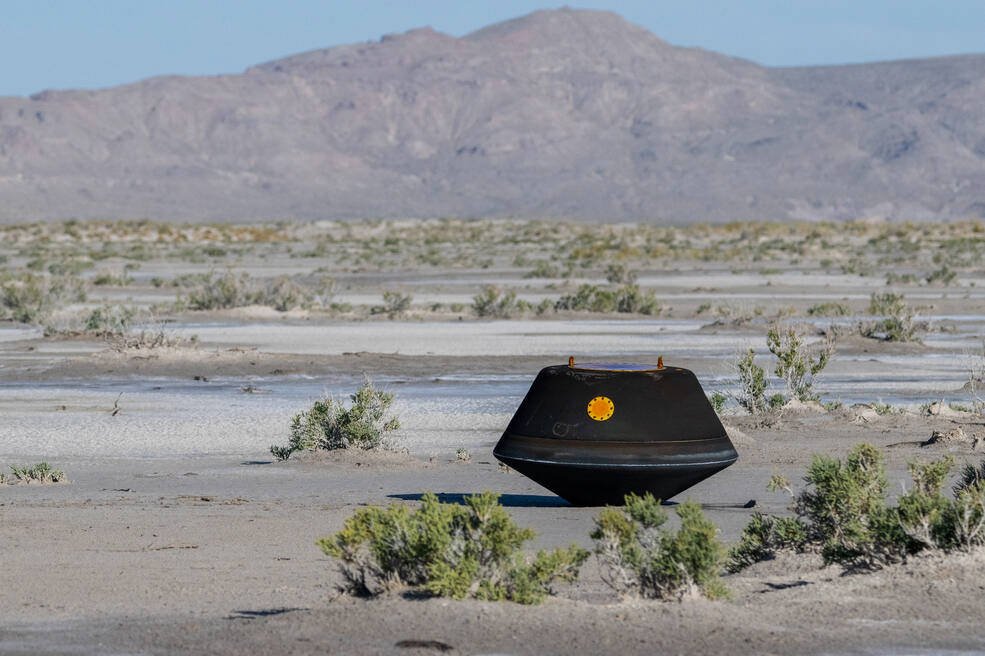A mission to bring samples from a distant asteroid back to Earth for study and analysis made history on Sunday with the historic landing of a capsule containing rocks and dust collected by NASA’s Origins, Spectral Interpretation, Resource Identification, and Security–Regolith Explorer (OSIRIS-REx).
The capsule reached its target area located within the Department of Defense’s Utah Test and Training Range outside Salt Lake City shortly before 9 a.m. MDT Sunday morning, completing a journey that spanned more than four billion miles since the spacecraft’s launch in September 2016.
NASA and U.S. Air Force teams retrieved the capsule within an hour and a half of its landing, after which it was taken to a hangar constructed on the range with a clean room that provides a constant flow of nitrogen to the sample container to prevent the entry of any earthly contaminants.
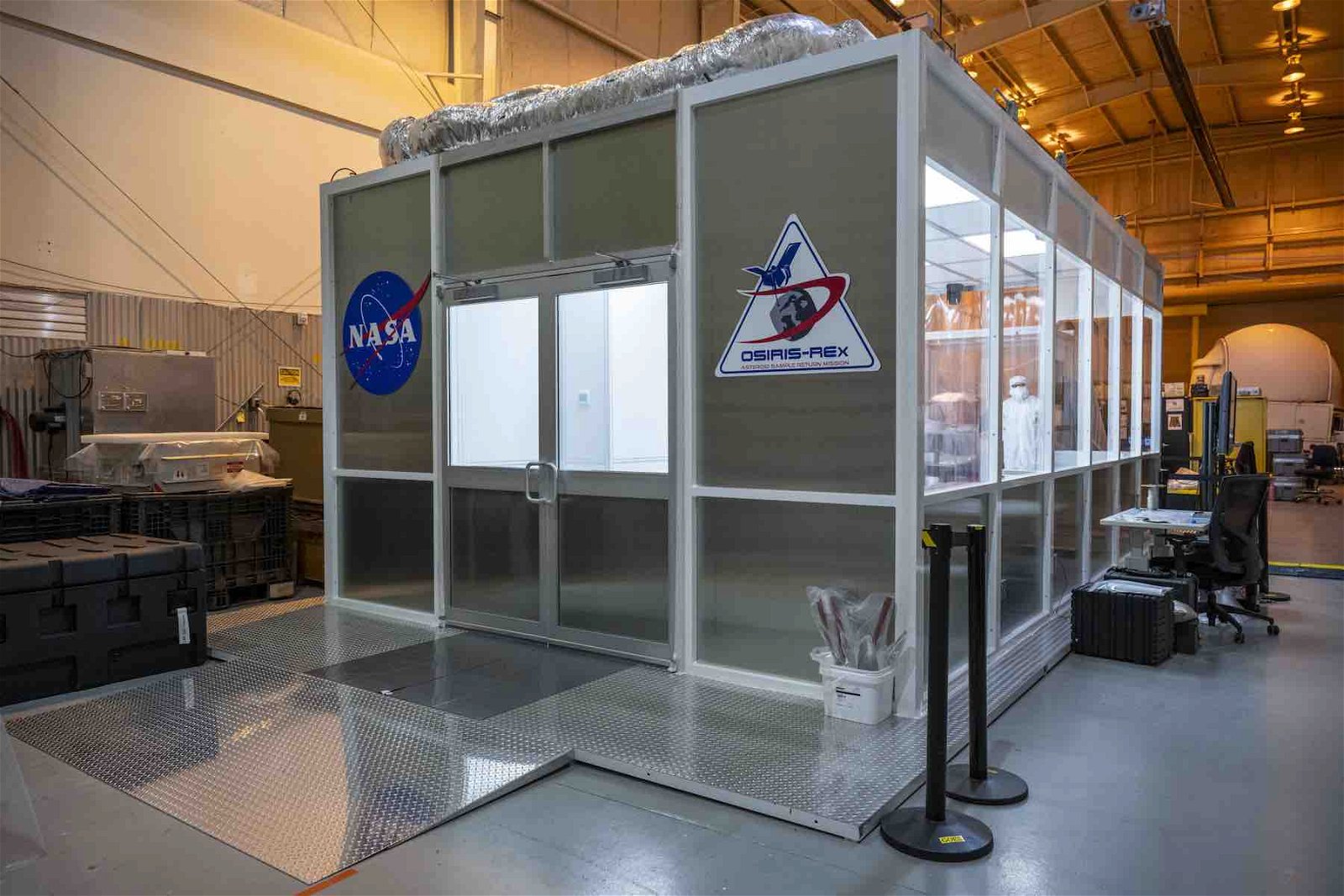

NASA Administrator Bill Nelson congratulated the OSIRIS-REx team, calling the successful retrieval a “picture-perfect mission” that will “deepen our understanding of the origin of our solar system and its formation.”
The samples will allow scientists an unprecedented opportunity to study fresh pieces of rock and dust collected from a distant asteroid, providing insights into how planets are formed, how organic compounds that gave rise to life on Earth may have originated, and even how future efforts to defend the planet from potentially deadly asteroids may be ensured.
A Near-Earth Asteroid’s Ancient Origins
First discovered in September 1999 by the Lincoln Near-Earth Asteroid Research (LINEAR) survey, Bennu is a relatively small near-Earth asteroid whose orbit brings it past our planet every six years. It was originally designated 1999 RQ36 and was renamed in 2013 by Michael Puzio, a third-grade student who won the opportunity to give the asteroid its current name in a contest.
Over the course of the last 4.5 billion years, Bennu has passed through space as a silent observer to our solar system’s history. With its own material composition likely to have been completed within the earliest few million years of the formation of our solar system, Bennu is believed to have broken off from a larger asteroid sometime between 700 million and as much as 2 billion years ago.
Recognized for being rich in carbon, Bennu was selected because of the opportunity it would provide for scientists to study mineral components capable of providing a window to the earliest history of the Solar System and possibly even molecular components that allowed the formation of life in Earth’s ancient oceans.
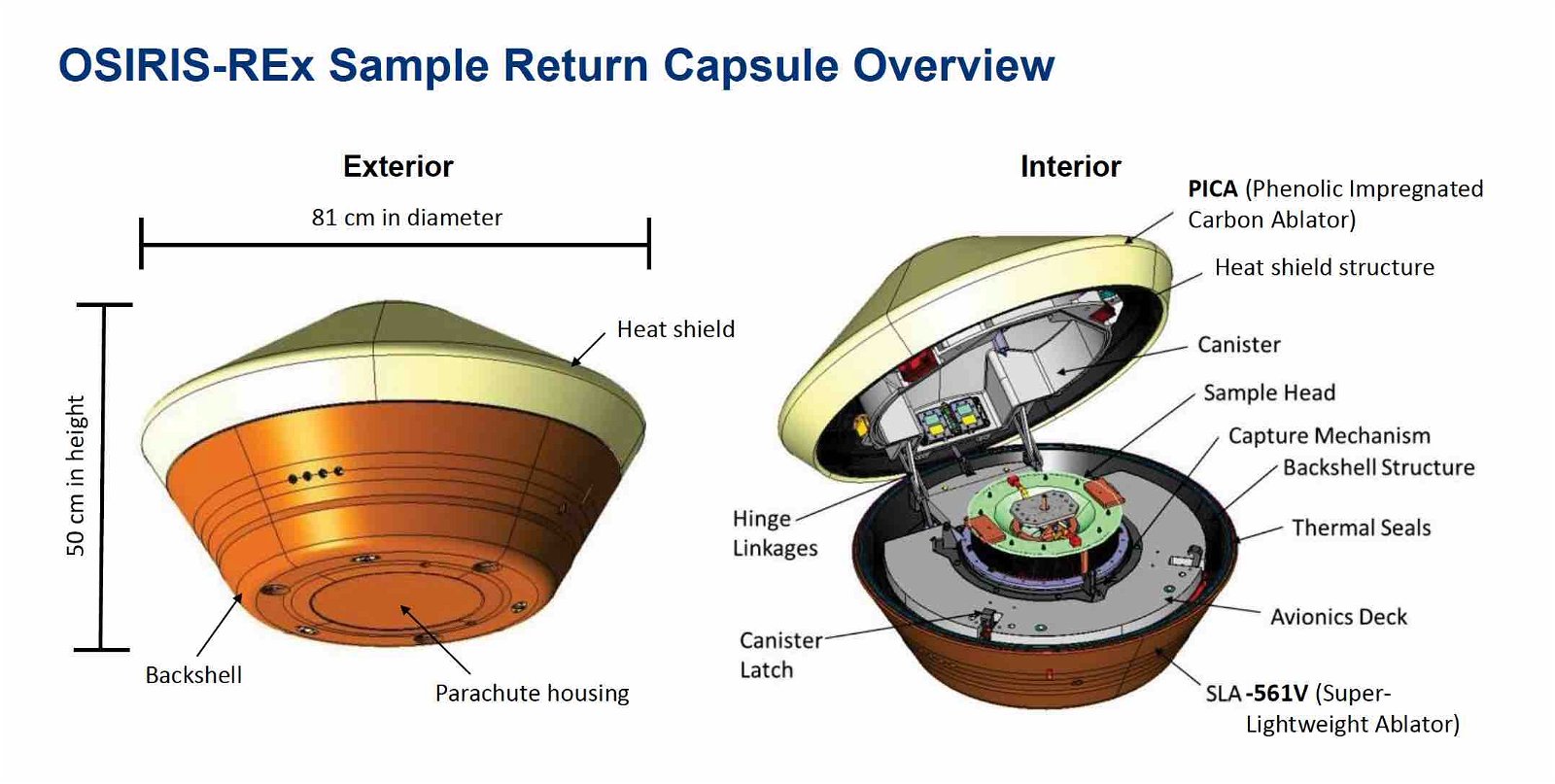

A 4 Billion Mile Mission to a 4.5 Billion-Year-Old Asteroid
Launched on September 8, 2016, from what has since been formally renamed Cape Canaveral Space Force Station, the OSIRIS-REx spacecraft was carried beyond Earth’s atmosphere aboard a United Launch Alliance Atlas 5 rocket, beginning its long journey to the asteroid Bennu.
On December 28, 2016, the spacecraft began its initial deep-space maneuver, known as DSM-1, activating its primary engine to align itself correctly for an Earth gravity assist scheduled for late 2017. Then on August 25, 2017, the spacecraft conducted its second engine firing, marking the first usage of the spacecraft’s attitude control system (ACS) thrusters. This maneuver fine-tuned its trajectory, adjusting its velocity by approximately 19 inches (47.9 centimeters) per second.
One month later, on September 22, 2017, OSIRIS-REx passed within approximately 10,710 miles of Earth as part of a gravity-assist maneuver that synchronized its orbit with Bennu and, capturing several stunning images of Earth and the Moon on its way, proceeded on its year-long journey to where it would collect imagery and samples from an ancient relic from the early formation of our solar system.
Stealing a Sample from a Potentially Deadly Asteroid
Equipped with a suite of remote sensing capabilities that included its laser altimeter, thermal emission spectrometer, infrared spectrometer, X-ray imaging spectrometer, and an array of cameras, OSIRIS-REx was outfitted to do far more than just sample retrieval of stony material from Bennu’s surface. Among its mission objectives, OSIRIS-REx was also tasked with documenting and measuring any deviations in the asteroid’s orbit stemming from non-gravitational forces, as well as mapping the asteroid’s topography, mineral content, and chemistry.
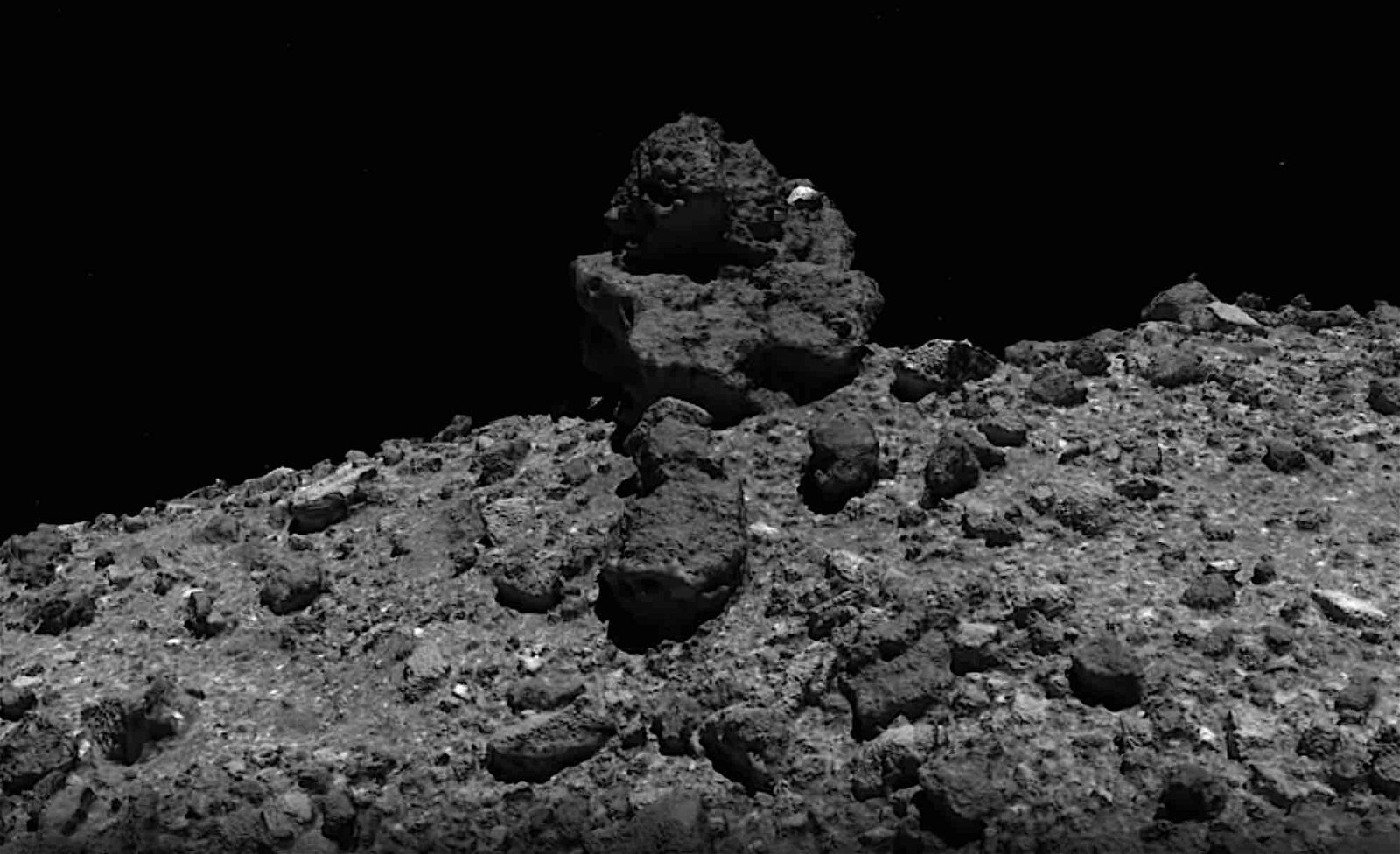

However, at the heart of the mission was the collection of rocks and dust from the surface of Bennu, which along with the spacecraft’s Sample Return Capsule, was made possible with the help of its Touch-And-Go Sample Acquisition Mechanism (TAGSAM).
OSIRIS-REx reached Bennu on December 3, 2018, where it remained for the better part of the next two years, mapping and studying the asteroid. Early imagery produced as the spacecraft approached the asteroid revealed it to be a curious-looking, dark-colored, diamond-shaped object.
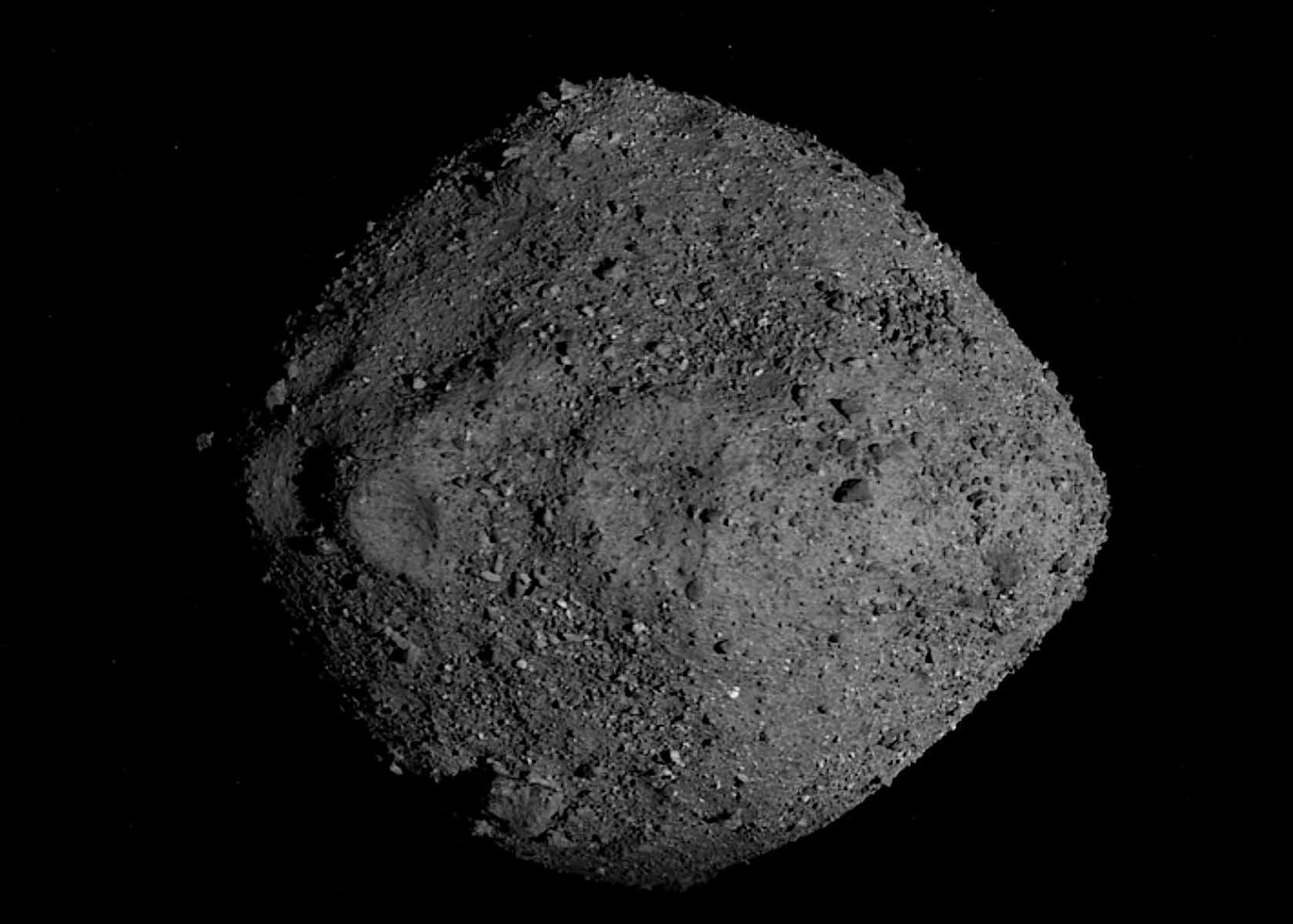

Upon arrival, it also became quickly evident that Bennu was far rockier than previous estimates would have guessed, with a surface composition of small, loose stone that the asteroid’s minimal gravitation field could barely contain.
Near the completion of its time on Bennu, in late October 2020, the first sample collection attempts began at Nightingale, the mission’s primary sample site, where it was determined that freshly exposed regions of the asteroid’s surface were likely to produce very clean samples, untarnished by exposure to the space environment from the eons Bennu has spent in orbit.
Even prior to sample collection, OSIRIS-REx’s spectrographic instruments determined that Nightingale was likely part of a series of small craters on Bennu’s surface, containing a much more diverse composition than initially thought. Space weathering detected on the asteroid’s surface revealed it to be different from any other planetary surface environments observed during past space missions.
OSIRIS-REx Obtains Samples from Bennu
On October 20, 2020, after spending almost two years orbiting Bennu, OSIRIS-REx carefully matched the asteroid’s four-hour rotation rate and, following a slow descent, made its fleeting touchdown on the asteroid’s surface. There, it spent close to five hours collecting samples over the course of three attempts.
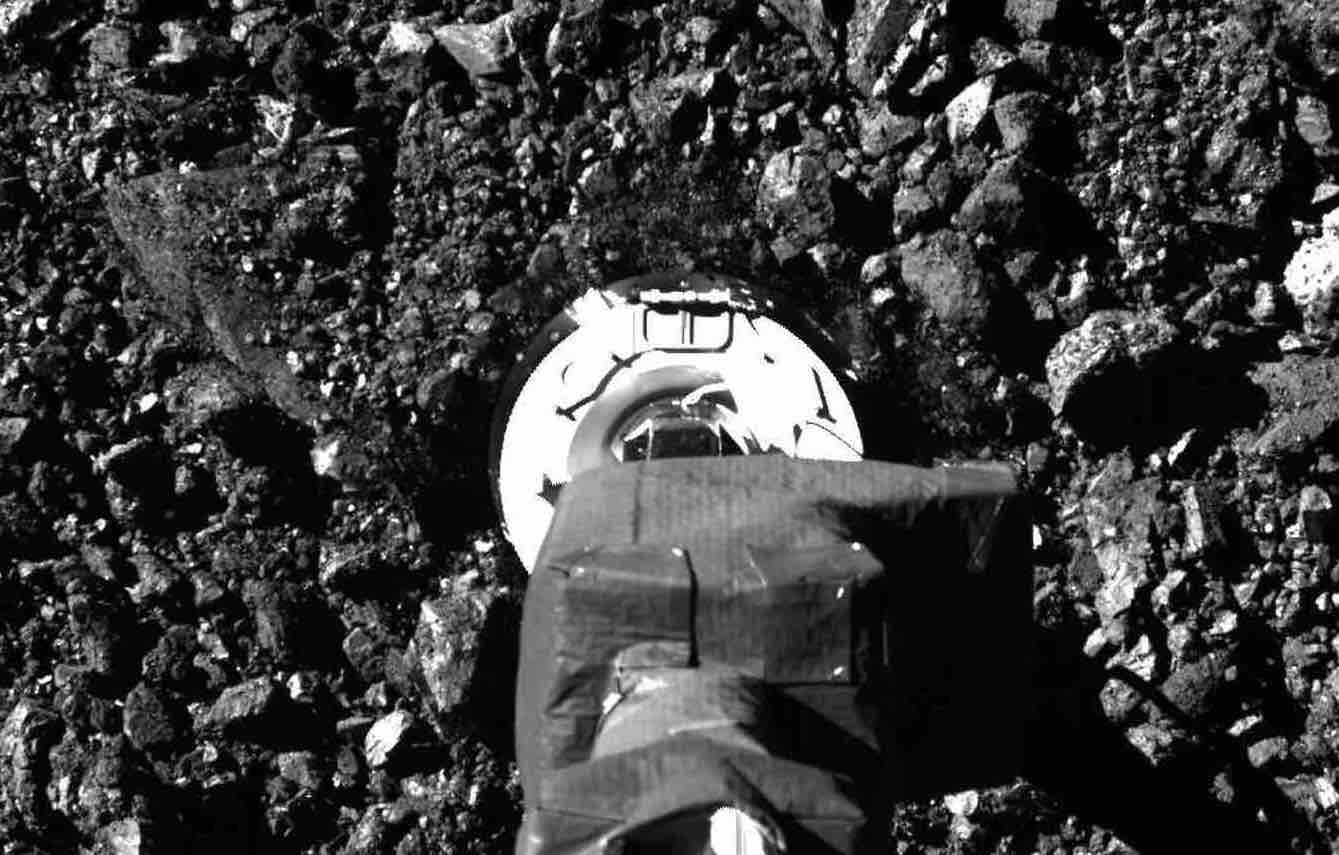

Likened to a Roomba vacuum mounted on the end of a stick, the TAGSAM sample collection device was tasked with obtaining at least 60 grams of material. However, during the sample collection attempts, it ultimately succeeded in the extraction of 250 grams of material from Bennu, leading to concerns about the leakage of material from the sample container.
“My big concern now is that the particles are escaping because we were almost a victim of our own success,” Dante Lauretta, the OSIRIS-REx mission’s principal investigator at the University of Arizona, Tucson, said at the time.
Despite the escape of small amounts of material evidenced by the cloud of particles visible in images obtained with the spacecraft’s suite of cameras, the samples were safely contained, and after another several months in orbit around Bennu, OSIRIS-REx began its long journey home on May 10, 2021.
NASA’s close encounter with Bennu may not be its last, however. Designated one of the most potentially hazardous asteroids, scientists believe there is as much as a 1 in 2,700 chance that Bennu could impact Earth by the late 22nd century. Fortunately, based on the current trajectories of Bennu’s orbit, it seems more likely that it will strike Venus or burn up as it approaches the Sun. Whether or not Bennu ever makes its way to Earth, studying the samples collected from its surface could provide insights that may end up being critical to any future efforts to prevent potentially deadly asteroids from impacting Earth.
Studying the properties of the samples harvested from Bennu may also help scientists plan for future space missions, where asteroids like Bennu will likely be key sources for obtaining water, metals, and other natural resources vital for such operations far away from Earth, whether they are undertaken by human crewed missions or robotic spacecraft.
Touchdown at Dugway Proving Ground
For two and a half years, OSIRIS-REx traveled the long distance back toward Earth, finally completing a pair of orbits around the Sun before dispatching the capsule with its precious samples from Bennu on its final delivery to Earth early on Sunday morning.
At 4:42 a.m. MDT at a distance from Earth of 63,000 miles, the OSIRIS-REx spacecraft ejected the sample capsule, which reached the atmosphere exactly four hours later at speeds exceeding 27,000 miles per hour. Reentry occurred off the California coast at an altitude of approximately 83 miles, just ten minutes before it made its way to the Utah desert with assistance from a pair of stabilizing parachutes that brought it to Earth at a comfortable 11 miles per hour.
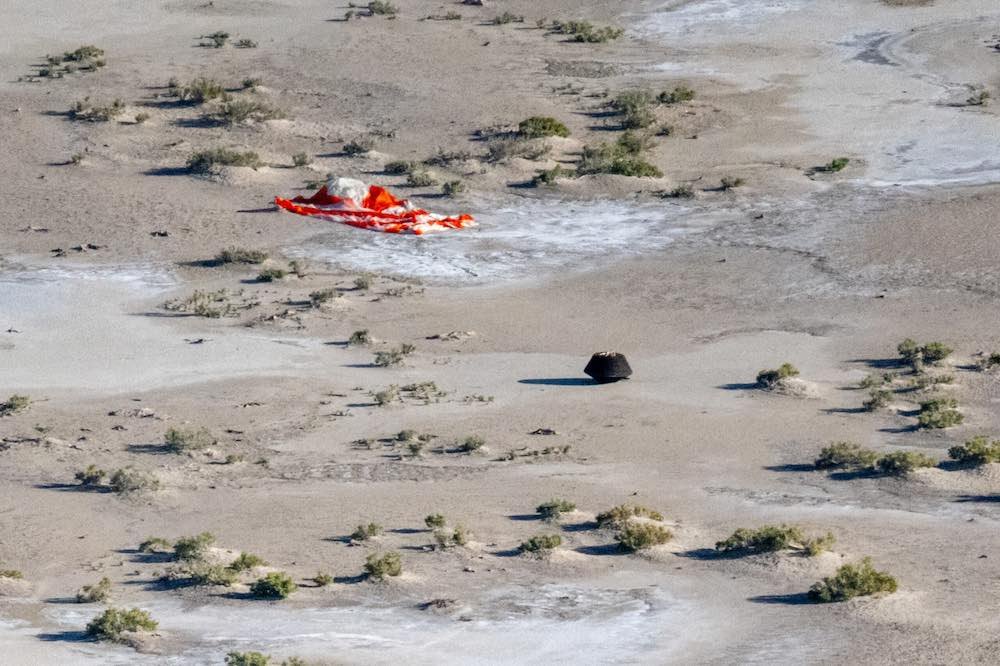

On its descent toward Dugway Proving Ground, the capsule was tracked using radar and a range of optical instruments. Upon landing, a recovery team arrived at the landing site at approximately 9:07 a.m. MDT. The capsule was blanketed for safe transport after it was determined it was safe to approach.
Following its successful landing, one of the most critical phases of the sample collection operation was the “nitrogen purge,” which ensures the collected material is protected from any earthly contaminants. After being secured at the clean room location in Utah, the samples were scheduled to be flown to NASA’s Johnson Space Center in Houston, Texas, where the canister would be disassembled, and the samples extracted for weighing, and eventually distributed for analysis at facilities around the world.
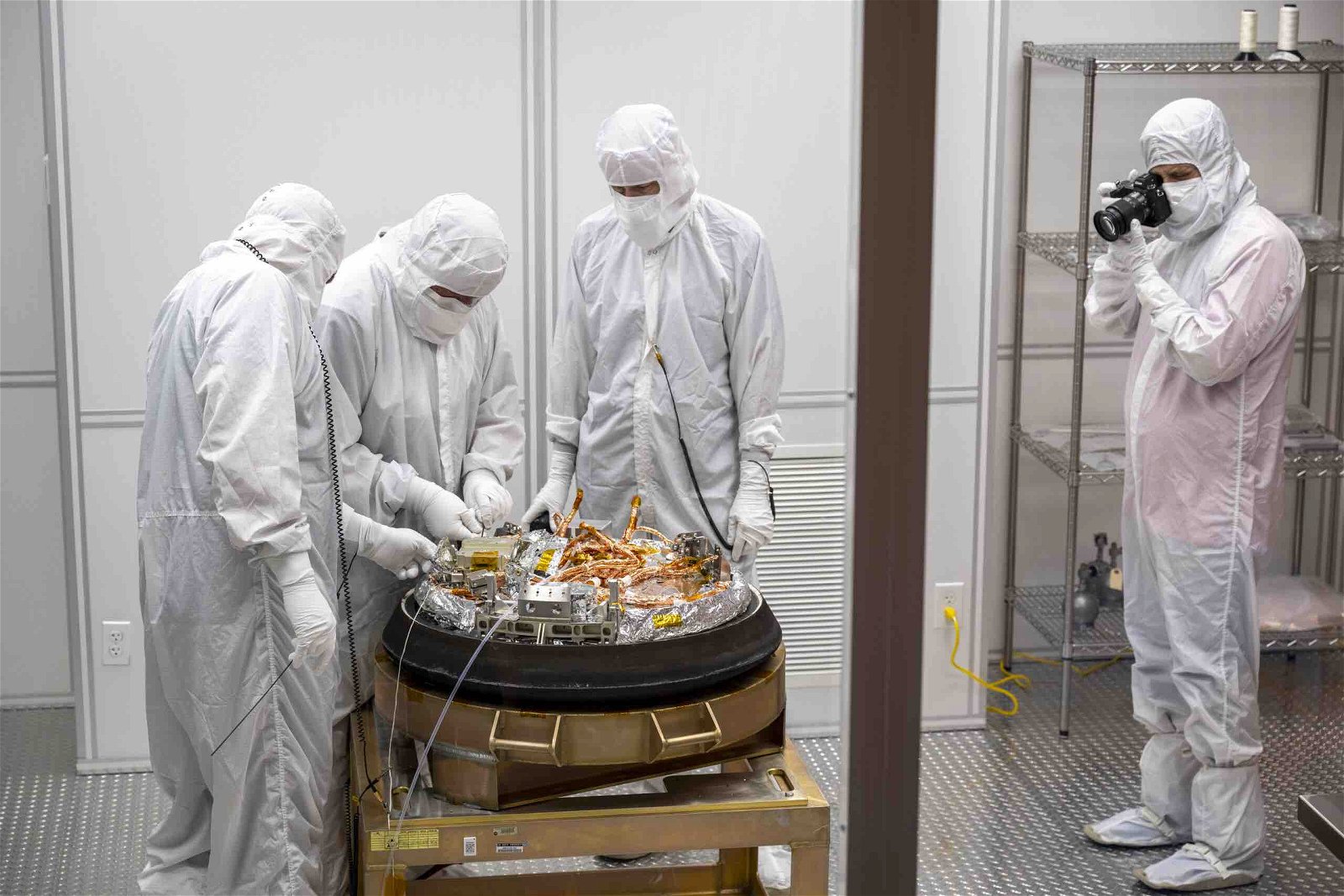

OSIRIS-REx Mission Marks a Historic First
On Sunday, NASA called the successful mission “a first for the U.S.” and thanked the “hundreds of people who remotely directed the spacecraft’s journey since it launched on Sept. 8, 2016,” along with the collective effort that guided OSIRIS-REx to Bennu and oversaw the sample collection effort prior to the spacecraft’s journey home.
“For us, this was the World Series, ninth inning, bases-loaded moment, and this team knocked it out of the park,” said Rich Burns, project manager for OSIRIS-REx at NASA’s Goddard Space Flight Center in Greenbelt, Maryland, praising the united effort that successfully brought the samples back to Earth.
“Today marks an extraordinary milestone not just for the OSIRIS-REx team but for science as a whole,” Dante Lauretta said in a statement.
“But let’s not forget – while this may feel like the end of an incredible chapter, it’s truly just the beginning of another,” Lauretta added.
“We now have the unprecedented opportunity to analyze these samples and delve deeper into the secrets of our solar system.”
Micah Hanks is the Editor-in-Chief and Co-Founder of The Debrief. He can be reached by email at micah@thedebrief.org. Follow his work at micahhanks.com and on Twitter: @MicahHanks.
